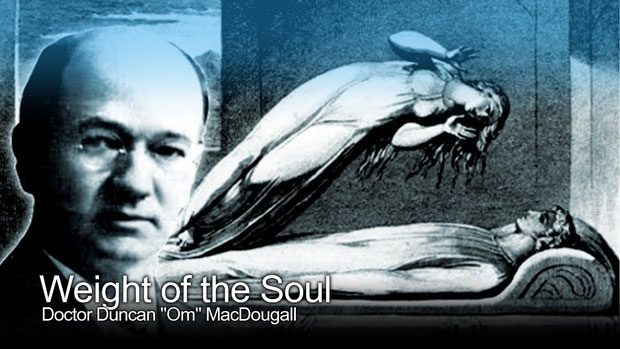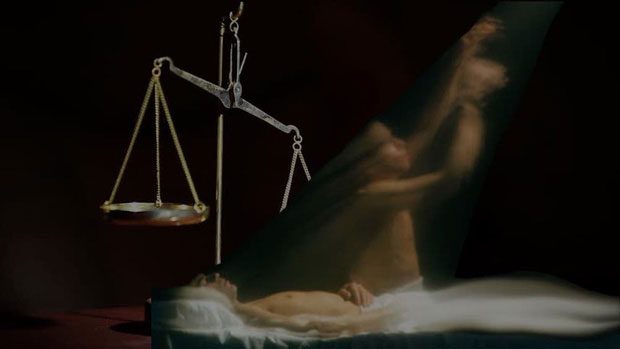Are ghosts real?? Believers in ghosts often share stories imbued with spiritual significance and a touch of fiction. Conversely, skeptics have yet to prove that ghosts do not exist. Thus, this question has sparked controversy for many years, even within the scientific community.
Throughout human history, there have been numerous conflicting viewpoints on this issue. In ancient Greece, the philosopher Pythagoras believed that the human soul was of divine origin and only existed before and after death, while in Hinduism, “atman” (also referred to as “breath” or “soul”) is considered a universal, eternal essence.
On April 10, 1901, in Dorchester, Massachusetts, a doctor named Duncan MacDougall held a profound belief in the existence of the human soul to the extent that he attempted to… weigh it. This belief led to the “21 grams theory”, which continues to spark debate and harsh criticism to this day.
The Scottish doctor Duncan MacDougall from Haverhill, Massachusetts, was one of the believers in the existence of the soul. In 1907, he decided to attempt to prove that ghosts were real. All he needed was someone… willing to die in front of him, along with a few dogs.
MacDougall’s idea was quite simple: he believed that if the soul were a tangible entity, it must have mass and be measurable. According to his hypothesis, a part of the soul would leave the body upon death to go elsewhere, but it would be impractical if that mass were substantial enough to be weighed.
Therefore, the only (and best) way to prove his hypothesis correct was to weigh a person immediately before death and right after. The difference in weight at that moment would help determine the mass of the ghost.
Searching for the Dying

Dying volunteers would be placed on the bed to determine the weight of the ghost.
MacDougall sought volunteers willing to pass away under his supervision. He needed them to die calmly, without causing the scale to shake and render the data useless.
Of course, such a special task could not be assigned to just anyone. He chose terminally ill patients—often those suffering from tuberculosis or similar illnesses—because they were exhausted and unlikely to react too strongly.
To conduct the experiment, he arranged a bed placed securely on an industrial scale with a sensitivity of about 5 or 6 grams. The dying volunteer would be placed on this bed immediately.
Some rumors suggest that MacDougall forced the volunteers to… block all bodily orifices to prevent any fluids from escaping and skewing the results. However, this is not accurate. MacDougall himself had considered this issue, but in essence, any fluids released would still remain on the bed, thus not affecting the overall results.
Surprising Results from a Controversial Experiment
The theory was one thing, but the experiment did not go as expected.
“Unfortunately, our scale was not sophisticated enough, and there were some disruptions from observers,” MacDougall wrote in a report on his failed experiment. In another instance, a patient passed away before the scale was prepared.
However, there was one case where a patient lost a specific weight of 21.3 grams at the moment of death. Another case lost 14 grams just before death was confirmed and then lost an additional 42.5 grams. A third case fluctuated slightly in weight right afterward (although the change was not as significant as the previous two).

The experiment did not meet MacDougall’s expectations.
Many might think that what MacDougall discovered was simply due to… faulty scales. Yet overall, the doctor still believed he had genuinely proven the existence of the soul.
But that was not the end. As a scientist, MacDougall knew he needed to conduct a controlled experiment, and this time he chose dogs as subjects. He selected 15 healthy dogs for the experiment, and since dogs are difficult to keep still, he decided to… take matters into his own hands.
“I was not fortunate enough to have a few dogs dying from illness,” he quoted in his report.
The idea behind this experiment was that animals do not have souls, so upon death, they would not lose weight. However, the thought of killing 15 dogs to prove they had no souls would outrage many. Ultimately, according to MacDougall’s report, none of the dogs used in the experiment showed any change in weight.
But Could Ghosts Be Real?
To be honest… no, we still do not know, because MacDougall’s experiment says nothing definitive.

Even the most exhausted dying person may not lie still, so the results obtained may not be entirely accurate.
MacDougall’s results were deemed to have many errors by experts due to the lack of transparency in his data collection methods. The doctor himself acknowledged that determining the exact moment of death is very challenging. Furthermore, any changes in the small sample size of the experiment could stem from temperature fluctuations causing increased sweating. Meanwhile, dogs lack sweat glands, meaning they are less likely to lose weight.
Moreover, even the most exhausted dying person may not lie still, so the results obtained may not be entirely accurate. Overall, MacDougall’s findings became a laughingstock among his colleagues for many months following.





















































